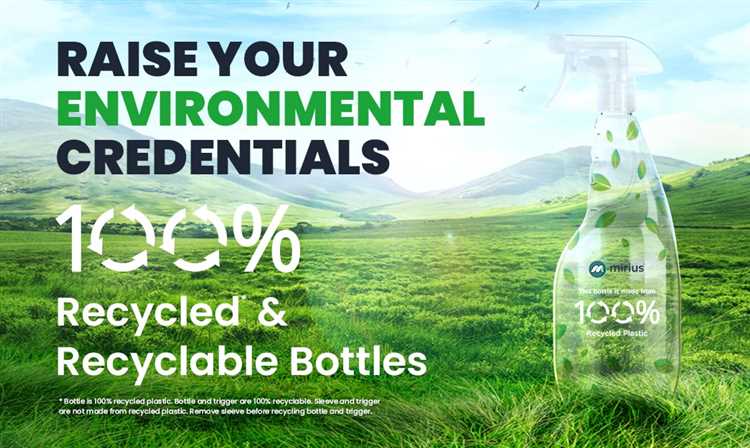
Plastic recycling has become an increasingly important aspect of waste management in recent years. With the alarming levels of plastic pollution, finding ways to recycle plastic waste has become a global priority. However, the question remains: is it possible to achieve 100% plastic recycling?
Recycling plastic has its own set of realities and challenges. While it is true that certain types of plastic can be recycled and turned into new products, achieving a fully circular and sustainable system is easier said than done. The reality is that only a fraction of the plastic waste generated globally is actually recycled, with the majority ending up in landfills or polluting our oceans.
One of the major challenges in achieving 100% plastic recycling is the lack of proper infrastructure and technology. Not all types of plastic can be recycled, and even those that can require extensive sorting, cleaning, and processing. Furthermore, the cost and energy required to recycle plastic can often outweigh the benefits, making it economically unviable in many cases.
- Is 100% Plastic Recycling Possible?
- Understanding the Current Realities
- Exploring the Challenges of Plastic Recycling
- The Role of Technology in Advancing Plastic Recycling
- Global Efforts towards Achieving 100% Plastic Recycling
- 1. Implementation of Extended Producer Responsibility (EPR) Programs
- 2. Advancements in Plastic Recycling Technologies
- 3. The Complexity of Plastic Waste Streams
- 4. Lack of Infrastructure and Investment
- Advantages and Disadvantages of Plastic Recycling
- Advantages of Plastic Recycling:
- Disadvantages of Plastic Recycling:
- The Future of Plastic Recycling: Innovations and Possibilities
- Advancements in Technology
- Circular Economy and Extended Producer Responsibility
- Collaboration and Public Awareness
- Question-answer:
- Is it possible to recycle all types of plastic?
- What are the challenges in achieving 100% plastic recycling?
- Why is it difficult to recycle certain types of plastics?
- What are the alternatives to plastic recycling?
- What are some solutions to improve plastic recycling rates?
- What is plastic recycling?
- Why is plastic recycling important?
Is 100% Plastic Recycling Possible?
Plastic recycling has become an increasingly important topic as the world grapples with the environmental impact of plastic waste. While recycling is seen as a way to reduce this impact, the question remains: is 100% plastic recycling possible?
The short answer is no, achieving 100% plastic recycling is currently not possible. There are several challenges and limitations that make it difficult to recycle all plastic waste.
- Contamination: One of the biggest hurdles in plastic recycling is contamination. Plastic waste is often mixed with other materials, such as food waste or non-recyclable plastics, which can compromise the recycling process. Sorting and separating different types of plastics can be a complex and costly task.
- Difficulties in separating plastic types: Not all plastics are created equal. There are numerous types of plastics, each with different chemical compositions and recycling properties. Some plastics are easier to recycle than others, which adds complexity to the recycling process.
- Lack of infrastructure: Despite the importance of plastic recycling, many regions lack the necessary infrastructure to effectively collect, sort, and process plastic waste. In some cases, plastics that are collected for recycling end up being incinerated or sent to landfill due to insufficient recycling facilities.
- Economic viability: Another challenge is the economic viability of recycling certain types of plastics. Some types of plastics have low market demand and are not economically feasible to recycle. This creates a disincentive for businesses and individuals to invest in recycling these plastics.
While 100% plastic recycling may not be currently achievable, efforts are being made to improve recycling rates and develop new technologies. Innovations such as chemical recycling and advanced sorting systems show promise in increasing the efficiency and effectiveness of plastic recycling.
It is also important to reduce plastic consumption and promote alternatives to single-use plastics. By reducing the demand for plastic products and promoting sustainable alternatives, we can lessen the burden on recycling systems.
In conclusion, while we strive to achieve 100% plastic recycling, we must acknowledge the realities and challenges that currently exist. It is a complex issue that requires a multi-faceted approach involving education, infrastructure development, and technological advancements.
Understanding the Current Realities
The current realities of plastic recycling reveal a complex and challenging landscape. While recycling efforts have increased in recent years, 100% plastic recycling remains an elusive goal. Here are some key factors that need to be understood:
- Contamination: One major challenge is the contamination of plastic waste. Even if the majority of plastic items are recyclable, contamination can occur when non-recyclable or improperly sorted materials are included. This contamination can render an entire batch of recycled plastic unusable.
- Recycling Infrastructure: Another reality is the lack of adequate recycling infrastructure. Many regions and countries lack the necessary facilities and resources to handle the vast quantities of plastic waste generated. Insufficient collection systems and limited processing capabilities further hinder effective plastic recycling.
- Complexity of Plastics: Plastics come in a wide range of varieties, each with different properties and recycling requirements. Sorting and processing different types of plastics can be a labor-intensive and costly process. As a result, some types of plastics are not economically viable to recycle.
- Market Demand and Economics: The demand for recycled plastic materials is another important factor. Without a strong market demand for recycled plastic, the economic viability of recycling diminishes. Low oil prices can also make it cheaper to produce new plastic from virgin materials, further impacting the market dynamics of plastic recycling.
- Consumer Behavior: Consumer behavior plays a crucial role in the success of plastic recycling. Proper segregation and disposal of plastic waste by consumers is essential for effective recycling. However, education and awareness campaigns are needed to encourage consumers to adopt more sustainable practices.
These current realities highlight the complexities and challenges that must be navigated in the pursuit of 100% plastic recycling. While progress has been made, it is clear that there is still much work to be done to overcome these barriers and achieve a truly circular economy for plastics.
Exploring the Challenges of Plastic Recycling
Plastic recycling presents a complex and multifaceted challenge for both individuals and communities. While the concept of recycling plastic seems straightforward, there are numerous obstacles that hinder its successful implementation.
One of the main challenges of plastic recycling is the wide variety of plastic types available. Plastics can be classified into different categories, such as PET, HDPE, PVC, and LDPE, each requiring different recycling methods due to variations in their composition and properties. Sorting and processing these different types of plastics can be time-consuming and costly, making it difficult for recycling facilities to handle them efficiently.
Contamination is another major hurdle in plastic recycling. Even a small amount of non-recyclable material, such as food residue or other types of plastic, can contaminate an entire batch of recyclable plastic. Contamination can occur at different stages of the recycling process, from collection and sorting to the actual recycling facilities, and it poses a significant challenge in achieving high-quality recycled plastic products.
The lack of consumer awareness and participation also contributes to the challenges of plastic recycling. Many people are still unaware of the importance of recycling plastic or do not have access to convenient recycling facilities. This leads to significant amounts of plastic waste ending up in landfills or incinerated instead of being recycled, further intensifying the plastic pollution problem.
The global nature of the plastic recycling industry adds another layer of complexity to the challenges. While recycling efforts may be successful in one country or region, the lack of coordination and unified standards among different countries can hinder the overall progress. The transportation of plastic waste to recycling facilities across long distances can also result in increased carbon emissions and environmental impact.
Lastly, the economics of plastic recycling present a major challenge. The fluctuations in oil prices directly impact the cost competitiveness of recycled plastic products, making it challenging for them to compete with virgin plastic. Additionally, the costs associated with collection, transportation, sorting, and processing of plastic waste can be prohibitive, making it difficult for recycling facilities to operate sustainably.
- The wide variety of plastic types
- Contamination
- Lack of consumer awareness and participation
- Global coordination and unified standards
- Economics
In conclusion, plastic recycling faces numerous challenges that need to be addressed in order to achieve a truly sustainable and efficient recycling system. These challenges include the wide variety of plastic types, contamination, lack of consumer awareness and participation, global coordination and unified standards, and the economics of recycling. By overcoming these obstacles, we can pave the way for a future where plastic recycling is not only possible but also the norm.
The Role of Technology in Advancing Plastic Recycling
Technology plays a crucial role in advancing plastic recycling and making it more efficient and effective. With the increasing global concern about the environmental impact of plastic waste, innovative technological solutions are being developed to tackle the challenges associated with plastic recycling.
One major area where technology has made significant advancements is in sorting and separating different types of plastics. Traditional recycling methods often relied on manual sorting, which was time-consuming and prone to human error. However, with the advent of advanced sorting technologies like optical scanners and spectroscopy, the process of plastic sorting has become faster, more accurate, and automated. These technologies use sensors and cameras to identify and sort different types of plastics based on their composition, color, or other physical properties.
| Technology | Advantages |
|---|---|
| Optical Scanners | Accurate identification and sorting of plastics based on color |
| Spectroscopy | Identification of plastics based on their chemical composition |
Another technological advancement in plastic recycling is the development of more efficient and cost-effective recycling processes. One such innovation is the use of chemical recycling, which involves breaking down plastic waste into its molecular components and then using these components to create new plastics. This approach allows for the recycling of plastics that were previously considered non-recyclable, such as multilayer packaging or mixed plastics. It also reduces the carbon footprint associated with plastic production by avoiding the extraction and refining of fossil fuels.
Furthermore, technology has played a vital role in improving the recycling infrastructure and making it more accessible. For example, the use of smart recycling bins equipped with sensors and IoT (Internet of Things) technology has enabled real-time monitoring of waste levels, optimizing collection routes, and increasing recycling efficiency. Additionally, the development of mobile applications and online platforms has made it easier for individuals and businesses to locate nearby recycling centers, learn about recycling best practices, and track their recycling progress.
In conclusion, technology has become a key driver in advancing plastic recycling by improving sorting and separation methods, enabling new recycling processes, and enhancing the recycling infrastructure. Continued research and development in this field are necessary to address the challenges associated with plastic waste and move towards a more sustainable and circular economy.
Global Efforts towards Achieving 100% Plastic Recycling
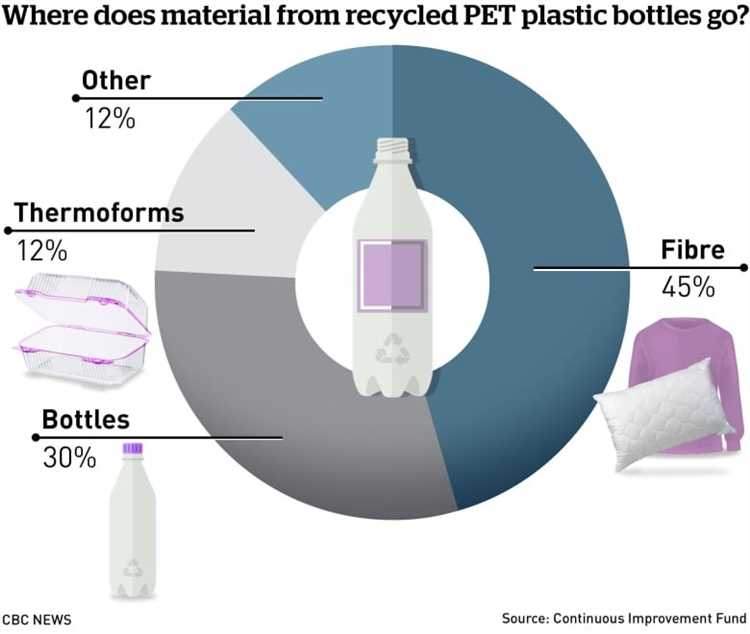
Plastic pollution has become a global environmental crisis, prompting governments, organizations, and individuals around the world to take action. Efforts towards achieving 100% plastic recycling are underway, with various strategies and initiatives being implemented to address this pressing issue.
1. Implementation of Extended Producer Responsibility (EPR) Programs
Many countries have introduced EPR programs, where producers take responsibility for the entire lifecycle of their products, including plastic packaging. This approach holds manufacturers accountable for the disposal and recycling of their products, encouraging them to design for recyclability and invest in recycling infrastructure.
Through EPR programs, governments are working towards establishing efficient collection and recycling systems, making it easier for consumers to recycle their plastic waste. These programs also encourage collaboration between different stakeholders, such as producers, recyclers, and waste management agencies, to streamline the recycling process.
2. Advancements in Plastic Recycling Technologies
Scientists and researchers are constantly developing innovative technologies to improve the recycling of various types of plastics. These advancements include chemical recycling, which breaks down plastic waste into its basic components, allowing for the production of new plastic or fuel.
Furthermore, technologies like mechanical recycling are becoming more efficient and effective, enabling the recycling of a wider range of plastics. Innovations in sorting and processing techniques are also contributing to increased recycling rates by ensuring that different types of plastics are properly identified and separated.
However, despite these advancements, challenges remain in achieving 100% plastic recycling.
3. The Complexity of Plastic Waste Streams
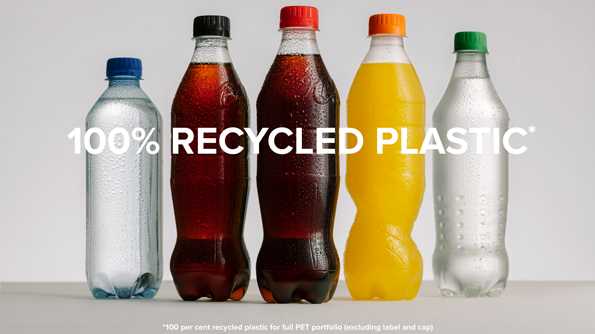
One of the main challenges is the complexity of plastic waste streams, as different plastics require different recycling processes. Mixed plastics and contaminated plastics pose challenges as they may require additional sorting and cleaning steps, making the recycling process more expensive and less economically viable.
Furthermore, the presence of non-recyclable or hard-to-recycle plastics in the waste stream creates significant obstacles.
4. Lack of Infrastructure and Investment
Many regions still lack the necessary infrastructure for plastic recycling, including collection systems and recycling facilities. Investments are needed to establish and expand recycling infrastructure, as well as to support research and development of new recycling technologies.
The financial viability of recycling also plays a crucial role. Due to the fluctuating prices of virgin plastics and the relatively low value of recycled plastics, financial incentives must be in place to encourage businesses and individuals to prioritize recycling over other disposal methods such as landfilling or incineration.
In conclusion, while progress is being made towards achieving 100% plastic recycling, there are still challenges to overcome. Global efforts, through the implementation of EPR programs, technological advancements, and investments in infrastructure and research, are essential in order to reduce plastic pollution and create a more sustainable future.
Advantages and Disadvantages of Plastic Recycling
Plastic recycling has become an important process in tackling the environmental impact of plastic waste. While it offers several advantages, there are also some disadvantages that need to be considered.
Advantages of Plastic Recycling:
- Reduces the demand for new plastic production: By recycling plastic, the need for producing new plastic can be reduced, which conserves natural resources and energy.
- Prevents plastic waste from entering landfills and oceans: Recycling plastic helps divert plastic waste from landfills and oceans, reducing pollution and protecting the environment.
- Conserves energy: The process of recycling plastic consumes less energy compared to producing new plastic. This energy conservation helps reduce greenhouse gas emissions and combat climate change.
- Creates job opportunities: Plastic recycling facilities create job opportunities in both the collection and processing stages, contributing to the economy.
- Encourages a circular economy: Plastic recycling promotes a circular economy by turning waste into valuable resources, reducing the reliance on virgin materials.
Disadvantages of Plastic Recycling:
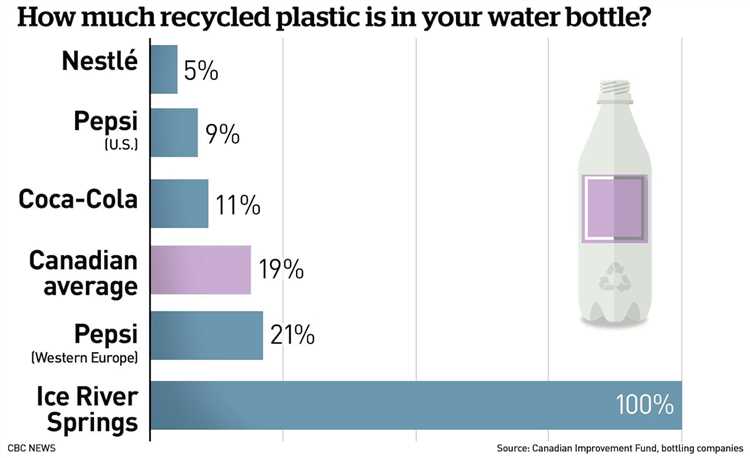
- Complex recycling process: The process of recycling plastic can be complex and require specialized equipment, making it more expensive compared to producing new plastic.
- Quality degradation: When plastic is recycled multiple times, its quality may degrade, limiting its potential applications and value.
- Limited recycling options: Not all types of plastic can be easily recycled. Some plastics are more difficult to recycle due to their chemical composition or lack of market demand.
- Contamination issues: Contamination of plastic waste, such as food residue or other non-recyclable materials, can hinder the recycling process and reduce the quality of recycled plastic.
- Transportation and logistics: Collecting and transporting plastic waste to recycling facilities requires additional resources and can contribute to greenhouse gas emissions.
While plastic recycling offers significant benefits in terms of resource conservation and waste reduction, it is important to address the challenges and limitations associated with the process to ensure its effectiveness in the long term.
The Future of Plastic Recycling: Innovations and Possibilities
Plastic recycling has been a topic of great interest and concern in recent years. As the world grapples with the environmental impact of plastic waste, innovative solutions and possibilities for the future of plastic recycling are being explored.
Advancements in Technology
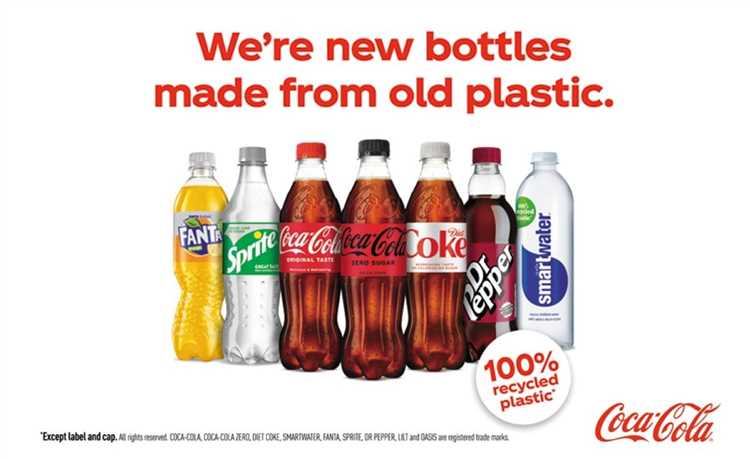
Technological advancements are playing a significant role in the future of plastic recycling. Breakthroughs in sorting and processing technologies, such as optical sorting and advanced material identification systems, are enabling more efficient and accurate separation of different types of plastics. This helps improve the quality of recycled plastic and makes it easier to reuse in new products.
Another area of innovation is chemical recycling, which involves breaking down plastic into its basic molecular components for reuse. This process has the potential to recycle a wider range of plastics, including those that are currently difficult to recycle. Chemical recycling technologies are still in the early stages, but they offer promising solutions for addressing the challenges of plastic recycling.
Circular Economy and Extended Producer Responsibility
A circular economy approach is crucial for the future of plastic recycling. This involves shifting from a linear, take-make-dispose model to a circular system where resources are kept in use for as long as possible. Implementing extended producer responsibility schemes can also incentivize manufacturers to take responsibility for the entire lifecycle of their products, including their proper recycling and disposal.
Policy interventions and regulations that promote the transition to a circular economy, along with increased investment in recycling infrastructure, can create an environment that supports and encourages plastic recycling.
Collaboration and Public Awareness
Collaboration between different stakeholders, including governments, businesses, non-profit organizations, and the public, is essential for driving innovation and progress in plastic recycling. Partnerships can foster knowledge-sharing, research, and development of new technologies and best practices.
Public awareness and education play a crucial role in the future of plastic recycling. By raising awareness about the environmental impact of plastic waste and promoting individual actions, such as reducing plastic consumption and properly recycling, we can all contribute to creating a more sustainable future.
| Challenges | Solutions |
|---|---|
| Contamination of plastic waste | Improved sorting technologies and public education about proper recycling practices |
| Lack of infrastructure | Increased investment in recycling facilities and collection systems |
| Complexity of plastic types | Advancements in material identification systems and chemical recycling |
The future of plastic recycling holds great promise, but it requires collective efforts and continued advancements in technology, policy, and public awareness. By embracing these innovations and possibilities, we can move closer to a world where 100% plastic recycling is not only possible but also a reality.
Question-answer:
Is it possible to recycle all types of plastic?
No, it’s not possible to recycle all types of plastic. Some types of plastic, such as PVC, are difficult to recycle due to their chemical composition.
What are the challenges in achieving 100% plastic recycling?
There are several challenges in achieving 100% plastic recycling. One challenge is the lack of infrastructure for collecting and sorting plastic waste. Another challenge is the difficulty in separating different types of plastic for recycling. Additionally, the contamination of plastic waste with other materials, such as food waste or paper, can also make recycling more difficult.
Why is it difficult to recycle certain types of plastics?
It is difficult to recycle certain types of plastics because their chemical composition makes them difficult to break down and process. For example, PVC contains chlorine atoms that can release harmful gases when heated, making it unsuitable for traditional recycling methods.
What are the alternatives to plastic recycling?
There are several alternatives to plastic recycling. One alternative is the use of biodegradable or compostable materials, which can break down naturally over time. Another alternative is reducing the use of single-use plastic products and promoting the use of reusable materials.
What are some solutions to improve plastic recycling rates?
There are several solutions that can improve plastic recycling rates. One solution is investing in infrastructure for collecting and sorting plastic waste. Another solution is educating the public about the importance of recycling and providing convenient recycling options. Additionally, implementing stricter regulations and incentives for recycling can also help improve recycling rates.
What is plastic recycling?
Plastic recycling is the process of converting waste plastic materials into new products, reducing the consumption of virgin materials and the amount of plastic waste sent to landfills or incinerators.
Why is plastic recycling important?
Plastic recycling is important because it helps to reduce the environmental impact of plastic waste. By recycling plastic, we can save energy, reduce greenhouse gas emissions, conserve natural resources, and decrease the amount of plastic pollution in our oceans and landfills.